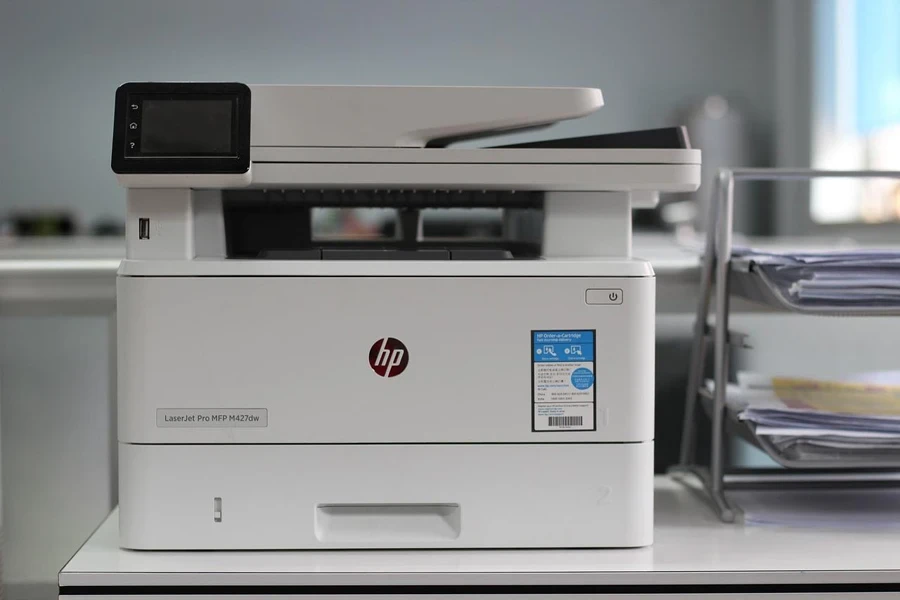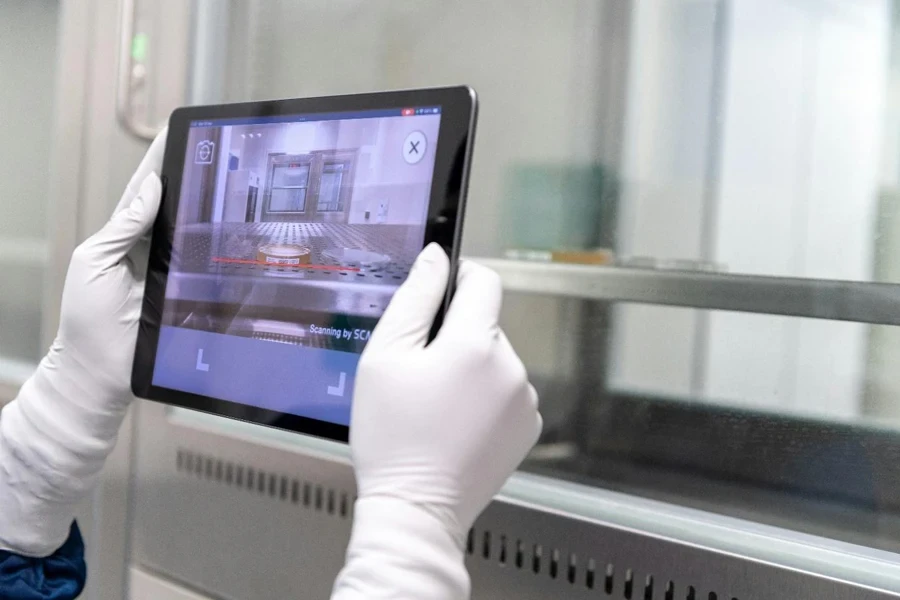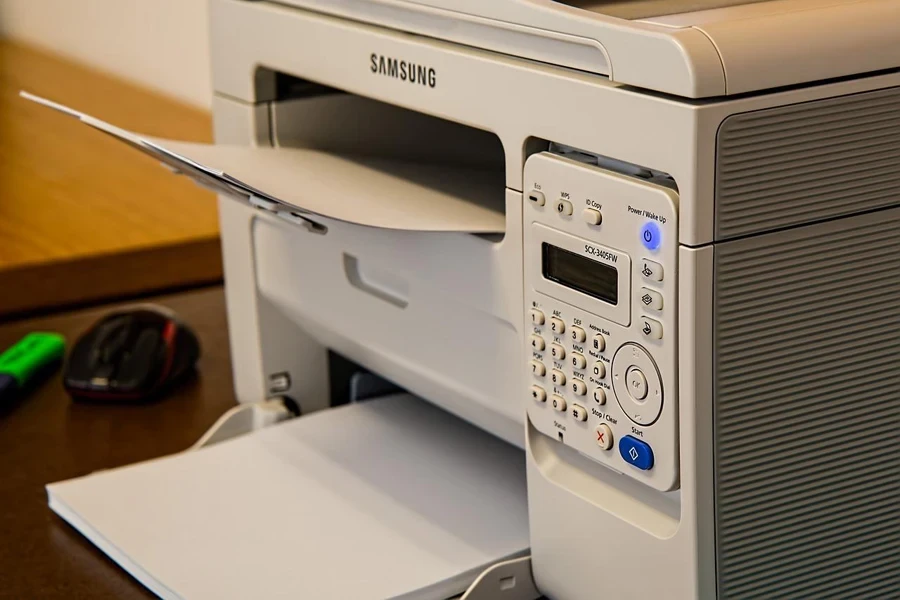In an era where digital transformation is reshaping industries, document scanners have become indispensable tools for efficient data management and workflow automation. As businesses across sectors increasingly adopt digital practices, understanding the latest market trends and technological advancements in document scanners is crucial for making informed purchasing decisions. By staying updated on these advancements, individuals can opt for the appropriate scanning tools to boost efficiency and stay ahead in the competitive market.
Table of Contents
● Market overview: Scaling the global growth of document scanners
● Revolutionizing scanning: Key technology and design innovations
● Top-selling models driving market trends
● Conclusion
Market overview: Scaling the global growth of document scanners

Market size and projections
The worldwide market for document scanning devices is seeing a surge in growth due to the growing demand for managing documents in different sectors. In 2023, the market was valued at USD 5.81 billion. It is projected to reach USD 10.76 billion by 2032, with a 7.2% growth rate. This upsurge is being driven by the increasing use of document scanners in industries like healthcare, finance, and government, where effective data management is essential.
Market segmentation insights
There are three types of document scanners in the market. High-speed scanners lead the way as they meet the need for digitization in industries dealing with extensive paperwork like financial institutions; portable scanners are becoming popular among professionals needing mobile options; and flatbed scanners are still favored for tasks demanding detailed scans in areas like design and archives. The financial industry is at the forefront of using application-based segmentation techniques for market expansion purposes, and government entities and other sectors, such as libraries and design studios, are also contributing to market growth.
Regional dominance
North America leads in market dominance due to its adoption of cutting-edge technologies such as optical character recognition (OCR) and cloud-based document management systems. The United States takes the forefront in incorporating processes within governmental and corporate realms. Conversely, the Asia Pacific region is poised for growth driven by economic progress, escalating digital initiatives, and burgeoning technology investments in emerging markets. Asia Pacific’s significant contributions have positioned it as a key player in the document scanner market.
Revolutionizing scanning: Key technology and design innovations

AI-driven automation
In today’s world, document scanning technology is getting smarter, with AI and machine learning integration that allows scanners to handle tasks more accurately than ever. The latest scanners leverage deep learning algorithms to enhance Optical Character Recognition (OCR) precision by recognizing various fonts, languages, and handwriting styles. Thanks to these innovations, documents can now be automatically sorted into categories like invoices or contracts without intervention required, saving time and effort. AI-powered image processing functions are in place to adjust the brightness contrast and alignment of documents, making sure even poorly captured pages look just right in real-time. This automated process greatly decreases the work required in sectors like finance and healthcare that handle large documents each day.
3D laser scanning advancements
The field of architecture and construction has seen advancements in 3 laser scanning technologies that provide exceptional accuracy levels. Contemporary scanners can generate point clouds surpassing 1 million points per second, creating 3-dimensional models with sub-millimeter precision. This detailed accuracy plays a big role in activities such as building information modeling (BIM), where precise digital renditions of buildings are vital for planning and renovation. The newest scanners also have multi-axis rotation features that enable data capture from different perspectives in one go. This helps cut down scanning time and enhances the precision of models. These advancements in technology do not just improve project results but also aids in preserving detailed architectural elements in old buildings.
Portable handheld scanners

Hand-held portable scanners have advanced significantly to provide top-notch scanning quality in size. These gadgets can now achieve resolutions as high as 1200 dpi, allowing them to capture intricate documents and images while on the move conveniently. Certain versions even come with dual light sources that aid in reducing shadows and distortions during scanning under lighting circumstances. Furthermore, Wi-Fi Direct and USB 3.0 connectivity facilitates data transfer to cloud storage or linked devices, ensuring prompt access to scanned documents for processing. The portability and exceptional performance render these scanners perfect for professionals seeking scanning solutions in various settings.
Integration with cloud systems
The combination of document scanners and cloud-based platforms has revolutionized document organization methods significantly. Current scanners have APIs facilitating effortless linkage to cloud services like Google Drive, Microsoft OneDrive, and Dropbox. This connectivity allows for uploading and syncing of documents, which can be viewed, modified, and exchanged by numerous users in various places. Additionally, advanced scanners offer encryption throughout the uploading procedure to safeguard documents. Some devices come with auto-tagging and metadata extraction functions that automatically categorize scanned documents according to their content, making it easier to find them quickly and manage documents effectively.
Top-selling models driving market trends

Canon Maxify GX4020
The Canon Maxify GX4020 is an all-in-one device that can be used in homes and offices. It combines printing and scanning capabilities in one unit with a resolution of 1200 x 2400 dpi for document and photo scanning quality. Its ink tank system is crafted to be cost-effective providing lower costs per page as compared to cartridge-based interns. Additionally, the GX4020 supports-sided printing and scanning, making it convenient for handling extensive document loads effortlessly. The Wi-Fi connection included in this device makes it easy to connect to cloud services, making it an option for users looking for a dependable and versatile tool to handle various office duties.
Fujitsu Image Scanner fi-800R
The Fujitsu Image Scanner fi-800R is known for being an efficient scanning option designed specifically for businesses. With its U-turn and backscanning capabilities, this device is built to manage documents of various sizes and qualities with no manual effort required. Its Active Skew Correction feature corrects document alignment automatically to prevent distortion, guaranteeing good scans. The fi R800 is built for efficiency, with a scanning speed of up to 80 images per minute (ipm). It’s perfect for businesses needing fast document digitization turnaround times due to its size, which fits well in office spaces, and the easy USB connection for seamless integration with current systems.
Canon CanoScan LiDE 400
If you’re looking for a scanner that can provide high-quality scanning for photos and documents with detailed precisions, the Canon CanoScan LiDE 400 could be a great choice. It offers an optical resolution of 4800 x 4800 dpi. This flatbed scanner is designed to capture fine details in photos, artwork, and documents. Notably, it has a feature that allows it to be used upright by utilizing its built-in stand, which helps save desk space. The LiDE 400 also has EZ buttons that make scanning documents quick and easy, making copying or emailing them a breeze. This feature helps to simplify the scanning process for users. The USB Type-C connection ensures high data transfer rates, which is great for those who value top-notch scan quality and user-friendly functionality.
Epson ES-C380W
The Epson ES C380 is a portable sheetfed scanner created for individuals working from home offices in mind. The device boasts a resolution of 1200 dpi. It can scan both sides of a document at speeds up to 30 pages per minute (ppm). Its small size makes it easy to carry around and its wireless capabilities enable scanning to cloud services or network destinations. The ES C380 also includes a 20-sheet document feeder (ADF) ideal for swiftly and effectively handling multi-page documents. Despite its size, the device can handle media formats, including thicker documents, up to 5mm, providing flexibility for different scanning requirements.
Brother DSmobile DS-940DW
The Brother DSmobile DS 940DW is known as one of the top choices for scanners today. It is perfect for busy professionals who require document scanning while on the move. With a 600 x 600 dpi resolution and compatibility with Wi-Fi and USB 3.0 connectivity, it offers flexible ways to stranger scanned documents. The built-in rechargeable battery and compact design make it easy to carry around and scan without being tied to a power source. Although compact, this scanner has dual-sided scanning functionality and can process different document formats like receipts, business cards, and plastic IDs. The built-in scanner software streamlines converting and distributing documents, making it indispensable for on-the-go workers seeking effective scanning options.
Conclusion

The market for document scanners is growing quickly due to progress in AI technology, high-quality scanning capabilities, and the rising need for effective document-handling solutions in different industry sectors. It’s important to grasp these technological advancements and market changes to make ideal choices that boost efficiency and maintain an advantage. As companies adopt transformation more widely, choosing the appropriate document scanner that suits individual requirements, streamlines processes effectively and attains sustained success is pivotal.




